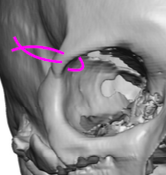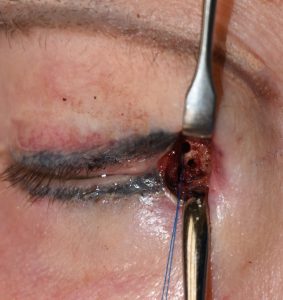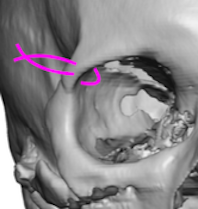There are many anatomic components that influence the shape of the eye. One of the most significant and commonly modified is that of the outer corner of the eye. The well known procedures of canthopexy and canthoplasty are widely used although there is frequent patient confusion as to the difference between them. At their most basic level a canthopexy is a more limited procedure that manipulates the tendon but maintains its attachment to the bone to produce some lower eyelid tightening. A canthoplasty more significantly changes the outer corner of the eye by moving the bony attachment of the tendon to a higher position along the rim, raising the outer corner of the eye.

In thirty (30) patients over a ten year period this type of canthoplasty was performed for either a congenitally downward sloped palpebral fissure (18) or in patients with normal eyes who wanted a more upwardly sloped palpebral fissure. (12) Average operative time was one hour. All patients achieved good results with emphasis on the need for over correction and the patient’s willingness to accept the over corrected look until it settled. (which they all do) All results at six months after the procedure would be considered permanent. No significant complications occurred.

Dr. Barry Eppley
Indianapolis, Indiana



